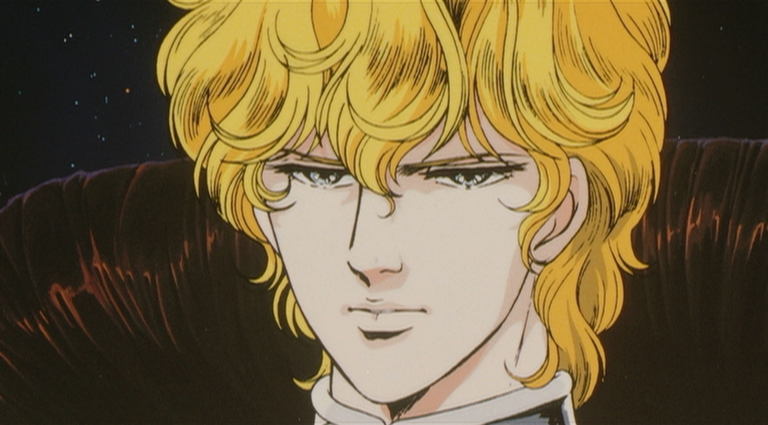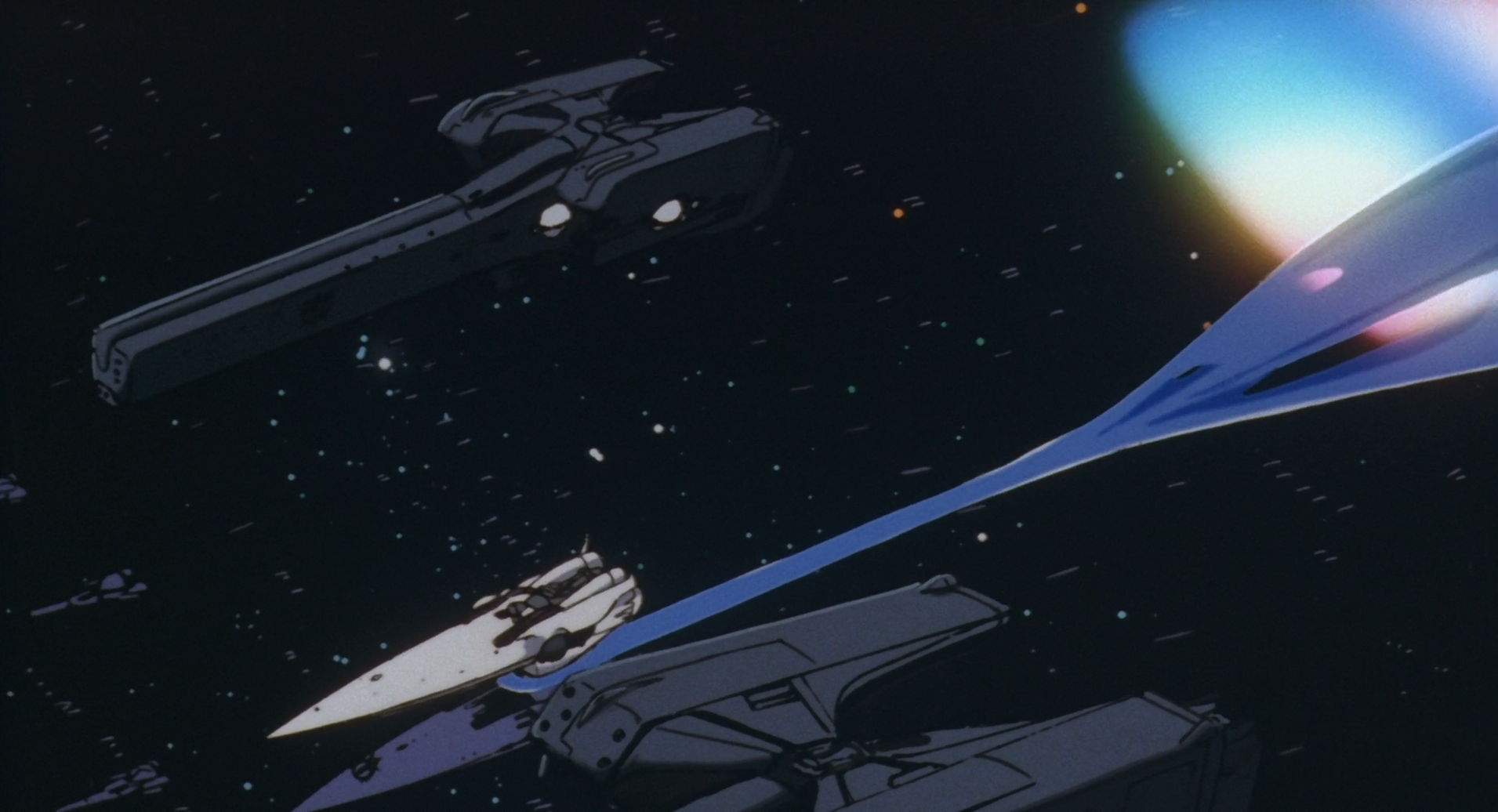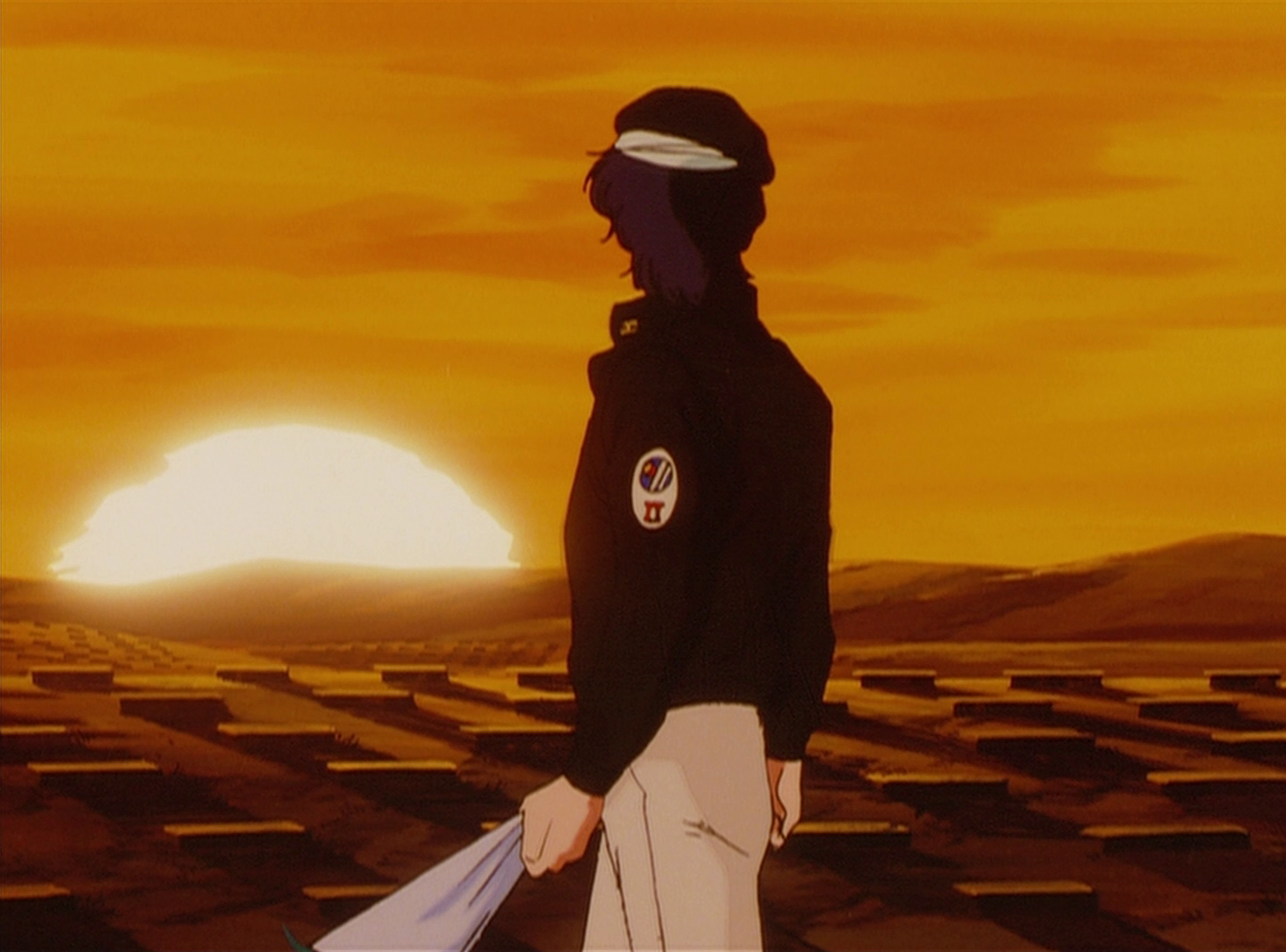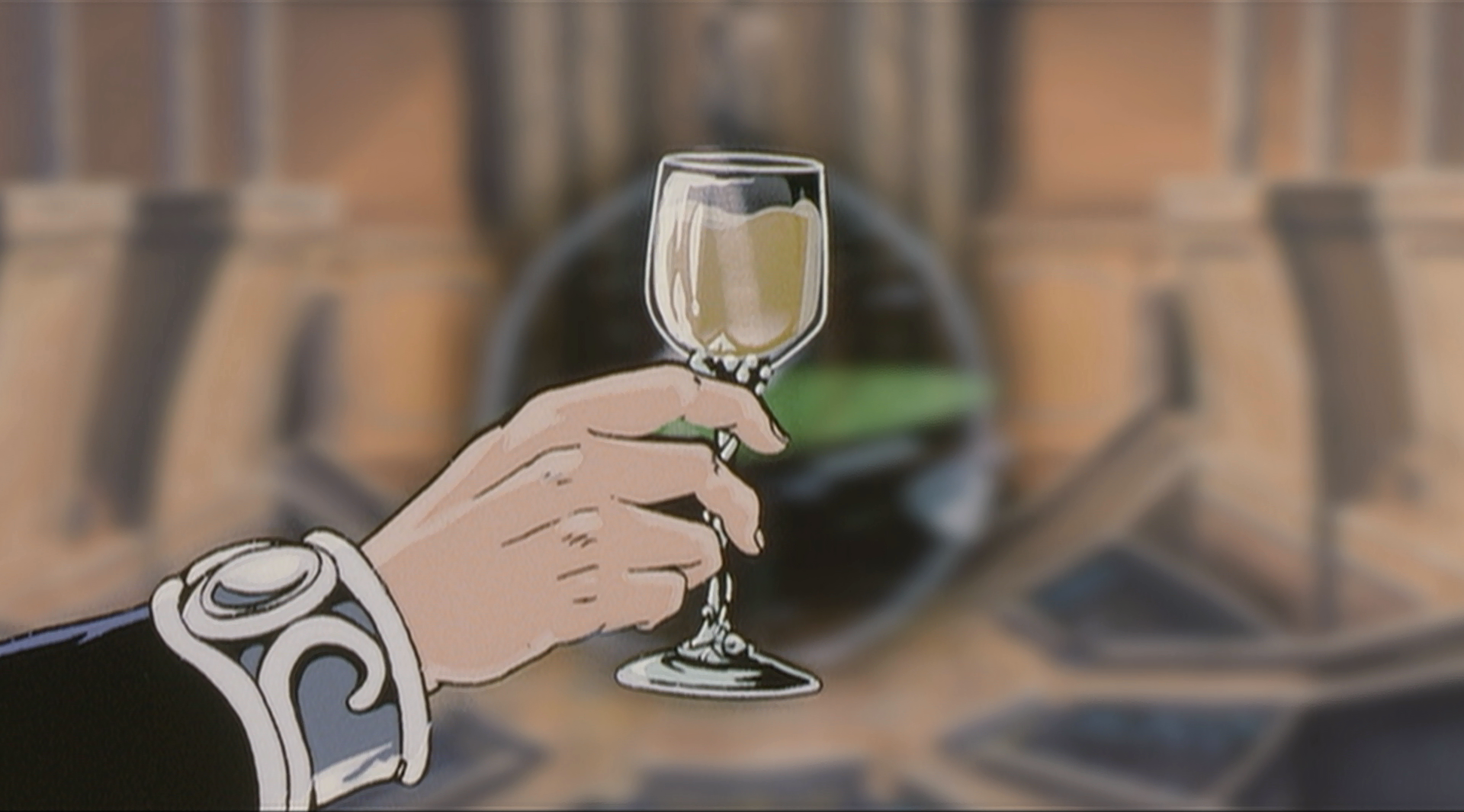Written by Sarca
Legend of the Galactic Heroes is a title that many in the anime community likely recognize. It’s been one of the most critically acclaimed series of all time for several decades, and although many likely have not experienced it, or are only now experiencing it through the new re-adaptation produced by Production I.G, it goes without saying that LotGH is in need of a bit more recognition for its massive contributions to otaku culture as a whole. However, the purpose of this text isn’t to talk about its effects on said culture, but rather to talk a little bit more about the people involved in its production. One of the few aspects of anime series that most anime fans don’t talk about is just who is actually putting the work in to animate a project, and so here we are.
The First Movie (1988)
The series’ animated format started off with My Conquest is the Sea of Stars, an hour-long film released in February of 1988 as a prequel to what would be episode 1 of the OVA series that would begin its sales later that year. The film is different from the OVAs in its staff, but a majority of its core team stayed on for either the next few seasons of the OVA series or for the entire series itself. This film was animated by studios MADHOUSE and Artland, the former of which had most recently received notoriety for producing films like Barefoot Gen (1985) and Neo Tokyo (1987), and the latter of which had already established itself with its co-production of the first Macross series in 1982.
Noboru Ishiguro, Macross’ chief director, and Artland’s founder would end up on the My Conquest is the Sea of Stars as director, with assistance by Hiroyuki Fukushima. The characters were designed by Matsuri Okuda, who also stayed on as animation director, and were written by Takeshi Shudou. Akio Sakai served as unit director, Morio Asaka served as assistant unit director, and Norifumi Kiyozumi was the mechanical animation director. Overall, it’s a pretty well-produced film for its time. There’s nothing special– it’s not as innovative as Akira, nor as lavishly animated as Space Battleship Yamato at the time (which Ishiguro held multiple series directing positions on), but it didn’t have to be. As a work, it’s totally serviceable, and it’s the writing and directing that keeps the viewer engaged.
Here’s where things get a bit confusing, though. The entire LotGH franchise has a number of odd crediting choices, so I’ll be going through each of the seasons, and films, and talking about who animated what, and how we know. For this first film, the main production (制作) credit is given to Kitty Film, and while they had an animation studio at the time, that studio was not credited for any part of the animation work. MADHOUSE and Artland are both credited for production assistance (制作協力), which usually infers that a film or episode had a lot of outsourcing to whatever particular studio is credited (that, or like on Makoto Shinkai/Ghibli films, it credits studios who did major work on their films). In this case, though, we know that MADHOUSE/Artland was more than just outsourced to based on the ‘animation production producer’ credit (アニメーション制作プロデューサー; alternatively just ‘animation producer’, アニメーションプロデューサー), which is usually given to representatives or producers that belong to the studio(s) responsible for animating a film/series.
Sometimes, though, it’s just given to a studio that did major outsourcing work (for example, Do You Love Your Mom and Her Two-Hit Multi-Target Attacks has an animation producer from A.C.G.T., who was outsourced for every episode, but not from J.C.STAFF). In this case, both animation producers, Masao Maruyama and Yasuteru Iwase belonged to MADHOUSE at the time. Kitty Film’s animation studio, named Kitty Film Mitaka Studio, is neither credited nor are any of their producers credited.
Legend of the Galactic Heroes Season 1 (Episodes 1-26)
The first season of the OVA series, which was released from 1988 to 1990, did feature Kitty Film’s studio. The first season involved a lot of returning staff, but featured some new people too, so before we look at who animated it, let’s look at the main staffers. Ishiguro returned, but as chief director (総監督) rather than director (監督); Shudou returned as a scriptwriter for the first three episodes, and a few other scriptwriters were involved in the first 14 episodes, but the rest was written by Shimao Kawanaka (who also took on the ‘series composition’ role); and Okuda was replaced as character designer by Hisatoshi Motoki, one of the era’s “realist” animators (referring to the realism movement of the 80s and 90s) known for his work with A-Production. There are a number of other notable credits, but for the sake of keeping this as an article rather than a paragraphical encyclopedia mimicking the information from database websites, I’m going to skip over them.
Kitty Film Mitaka Studio is credited for animation production (アニメーション制作), and there’s no doubt in my mind that they were the lead ‘studio’ behind this season. There’s a bit of a “but”, though. As much as the Mitaka Studio might have been involved, every episode was outsourced somewhere. Here’s a breakdown of that outsourcing:
- MADHOUSE (episodes 1-26)
- Artland (episodes 1-26)
- E&G Films (episodes 2 and 11)
- I.G Tatsunoko (a.k.a. Production I.G; episodes 3, 9, 12-14, and 18)
- Raijin Film (episode 4)
- Studio Look (episode 5)
- AIC (episodes 5-6, 10, 21, and 23)
- Watanabe Promotion (episodes 6, 10, 16, 21, and 23)
- Bebow (episode 7)
- Magic Bus (episodes 7, 15, 23, and 25-26)
That’s obviously a LOT of outsourcing studios, but we can overlook most of these. Raijin Film and Studio Look are both minor production companies; AIC, I.G Tatsunoko, E&G Films, and Watanabe Promotion, although all notable in their own rights aren’t noteworthy here. So what we’re left with is MADHOUSE, Artland, Bebow, and Magic Bus. MADHOUSE and Artland worked across the entire season, and were involved in the first film, so that’s their notability; Bebow and Magic Bus are notable for a different reason, however. Each episode had a different animation director, or animation director(s), but what kept the art style mostly consistent is Hisatoshi Motoki’s work as chief animation director (CAD; a role directly above the “animation director” credit). He worked on all episodes as CAD except episode 7, which had outsourcing to MADHOUSE, Artland, Bebow, and Magic Bus (albeit, mainly the latter two).
Tomonori Kogawa, founder of Bebow, was instead in charge of episode 7’s animation direction, and Kogawa has a very distinct drawing style, and so out of all of the episodes in season 1, it is by far the most distinct episode. The other episodes also had a MADHOUSE animation producer, but episode 7 had a Magic Bus animation producer, furthering the idea that this episode is a bit special. Magic Bus’ collaborations with the series became more frequent, and they ended the series off alongside MADHOUSE and Artland.
More on the topic of episodic staff, a majority of the episode directors, animation directors, and storyboard artists for the first season were those affiliated with (or directly employed by) the above-mentioned studios, for example, Mitsutaka Noshitani (a Magic Bus director) was an episode director across all of Magic Bus’ episodes for season 1. Overall, it’s a very messy production, and despite Motoki’s best efforts, the animation direction work (which can be gauged by how good the drawings for keyframes are, whether the characters stay on model when it’s not stylized, and etc.) is considerably inconsistent, a theme that follows the series until its end in 2000. Motoki was also occasionally joined by Keizou Shimizu from Magic Bus as CAD, but specifically only on Magic Bus’ episodes (including Kogawa’s episode 7). Regardless, more than its success as a product, these collaborations paved the way for seasons 2’s production.
Legend of the Galactic Heroes Season 2 (Episodes 27-54)
The second installment of the LotGH OVA series was produced from 1991 to 1992, but its production is wildly different from season 1’s. First of all, Ishiguro was joined in the director’s chair(s?) by Kitty Film chief producer Masatoshi Tahara (under the pseudonym Masato Shitahara) as series director; secondly, Motoki left the series as character designer and was instead replaced by Kazunari Kume (alternatively known as Issei Kume). To be frank, though: season two’s production was much more centralized to a single studio, that being Magic Bus. The breakdown is as follows:
- Magic Bus (episodes 27-39, 41-48, and 50-53)
- Artland (episodes 31, 38, 49, and 54)
- Tokyo Kids (episode 40)
Despite a more centralized studio production, the animation direction work, and the direction (episode by episode, rather than as a series) varied drastically. For example, episode 43 (Magic Bus) is a well-directed and well-written episode, but what suffers is the animation. In this episode, Schenkopp and Reuenthal duke it out in hand-to-hand combat during a battle. Most of the battle, including this fight, feels below average in terms of its animation quality. What really doesn’t work is the keyframes (meaning, the main drawings) lacking impact, being off-model a considerable number of times, and the lack of in-betweens during most of the scenes. This is just one example, but a majority of the series ends up having this same issue; it’s fine to stylize a lower framerate (i.e. using 3s, therefore having 8 frames-per-second (fps) rather than 24 fps). Of course, that’s not always true; episode 44, the next episode, has much better animation and much more consistent quality, but instead has weird interjections of CG animated vehicles (which is already odd) and what seems to be a few mistakes with the cel painting and/or coloring.
None of that is to diss on the series, though; it has its ups, and it has its downs, just like anything else. Continuing the series would prove to be incredibly difficult for Kitty Film, however, as a scandal would end up devouring the company, Magic Bus would venture into producing other films based on the series, and Magic Bus’ own inability to keep up with producing the series almost entirely on their own (as an outsource studio for the Mitaka Studio) would force them to hand more episodes elsewhere.
Read Part 2.
Follow Sarca on Twitter
Visit Legend of the Galactic Heroes official website.
You can watch both the My Conquest is the Sea of Stars movie and the OVA anime series on HiDive.
©Yoshiki Tanaka, Tokuma Shoten, Tokuma Japan Communications, Wright Staff, Suntory




Participate In Discussions